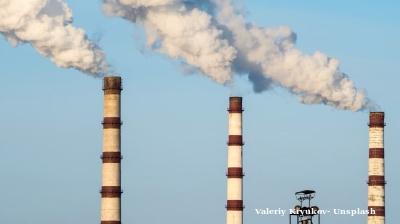The Arctic is set to undergo dramatic and irreversible changes in the coming years if global warming reaches 2.7°C above pre-industrial levels, according to a new paper from Science that will see large swathes of polar ice and permafrost melt that will have a catastrophic impact on the climate.
Last year was the hottest year in documented history and every month was already over the 1.5°C above the pre-industrial average set as the baseline for the limit in temperature rises by the 2015 Paris Agreement.
“We've reached 1.5°C global warming. With current policies, we're heading for a catastrophic 2.7°C warming,” said Professor Stefan Rahmstorf of the Potsdam Institute for Climate Impact Research in Germany. “A new review paper in Science shows: this would change the Arctic 'beyond recognition', with knock-on effects (like rising seas) around the world.”
The disappearance of sea ice and the melting of the permafrost in northeast Russia will lead to unpredictable results. Global weather patterns will be drastically altered, while the melting of the permafrost will release gigatonnes of CO₂ into the atmosphere almost overnight, that has been locked in the ice since the times of the dinosaurs.
Last year scientists warned that although the ground is still frozen, the Arctic regions are already releasing more carbon dioxide than they are absorbing. The tundra contains huge swathes of the world’s boreal forests, accounting for only 15% of Earth's soil area but storing around one-third of the world's soil organic carbon, according to the research.
The majority of scientists agree that the global community will miss the Paris Accord target of keeping temperature rises to 1.5°C and will see them rise to between 2.7°C and 3.1°C by 2100. Not enough has been done to reduce emissions, which are currently at an all-time record high, and the recent COP summits to limit the use of fossil fuels have been a cop-out, hijacked by the oil industry vested interests.
“At such a level of warming, the Arctic would be transformed beyond contemporary recognition,” the report states. “Virtually every day of the year would have air temperatures higher than pre-industrial extremes, the Arctic Ocean would be essentially ice free for several months in summer, the area of Greenland that reaches melting temperatures for at least a month would roughly quadruple, and the area of permafrost would be roughly half of what it was in preindustrial times.”
As what is now an annual disaster season is about to get underway, the loss of Arctic ice and permafrost is expected to make things much worse in the coming years.
The higher temperatures in the Arctic is expected to trigger widespread ecosystem disruptions and severe damage to infrastructure, including roads, pipelines, and buildings, as thawing permafrost weakens foundations, the report warns.
“These changes could accelerate feedback loops, such as increased methane emissions from melting permafrost, further exacerbating global warming,” the report says, suggesting that global warming will go into a rapidly accelerating meltdown in the coming decades.
The study underscores the urgent need for stronger climate action, arguing that the worst impacts could still be mitigated through more ambitious efforts to curb emissions.
“These geophysical changes go along with widespread ecosystem disruptions and infrastructure damage, which, as we show here, could be substantially reduced by increased efforts to limit global warming,” the authors conclude.
bneGREEN

L&T secures order for Kudankulam nuclear project expansion in India's Tamil Nadu
Indian engineering giant Larsen & Toubro has secured a major order valued at up to $285mn from the state-owned Nuclear Power Corporation of India Ltd for works at the Kudankulam nuclear power plant in Tamil Nadu

India sees drop in CO2 emissions as renewables accelerate
India’s power sector has recorded an unusual dip in carbon dioxide output, with emissions falling by 1% in the first half of 2025 compared with a year earlier.

Russia to build large-scale high-speed train network
When Russian prime minister Mikhail Mishustin announced that Vladimir Putin had approved more than 4,500km of new high-speed rail, the tone was businesslike, almost perfunctory, but the project could be a game-changer.

Renewables sector warns Croatia risks losing billions in investments
Industry associations say that without rapid intervention, Croatia risks increasing fossil fuel imports, losing market confidence and undermining climate and energy objectives.



